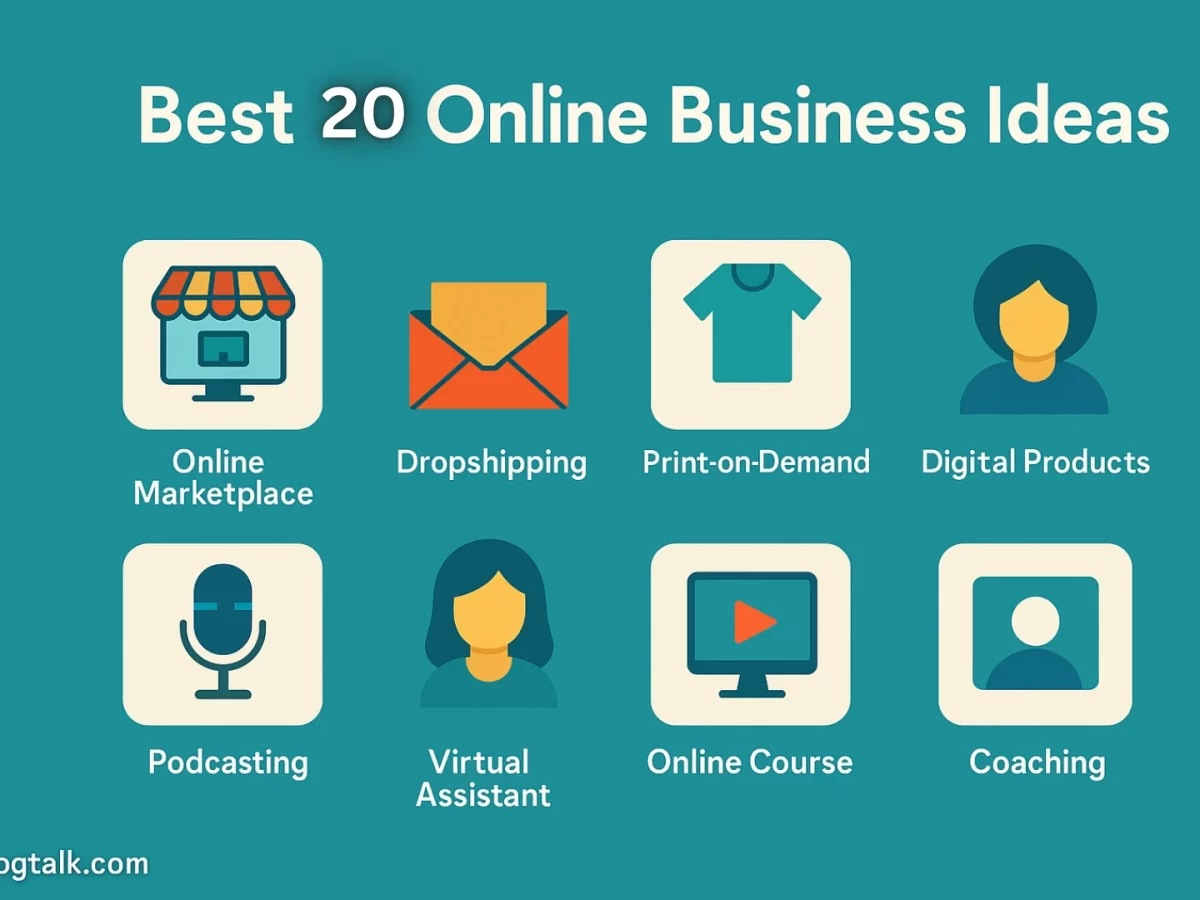The success of any SEO strategy depends on keyword research. It will help you understand what your target audience is seeking and how to present your content in a way that satisfies their needs. The best content may not be noticed by the search engines and the users without the correct keywords.
With the changing search engine algorithms, keyword research is not only about identifying popular terms; it is also about understanding the nuances of search intent. It also involves examining user intent, competitions and long-tail opportunities that can be used to generate high-converting traffic to your website. In this process, tools and data-driven methods are critical.
This article will take you through the most effective methods of keyword research that can help you improve your SEO. Whether you’re a new marketer or an experienced one, these insights will enhance your search visibility.
- What is Keyword Research?
- Why is Keyword Research Important?
- Effective Keyword Research Techniques in SEO
- 1. Brainstorm Seed Keywords
- 2. Use Keyword Tools
- 3. Analyse Competitor Keywords
- 4. Search Volume & Difficulty
- 5. Learn the intent of the user
- 6. Long-tail Keywords Target
- 7. Google Autocomplete & People Also Ask
- 8. Analyse SERP Features
- 9. Leverage Google Trends
- 10. Tap into Social and Forum Data
- 11. Run Bulk Keyword Mining
- 12. Build Keyword Clusters
- 13. Map Keywords to Buyer Journey
- 14. Include Local & Seasonal Modifiers
- 15. Monitor, Evaluate, Refine
- Some Keyword Research Tips
- FAQs About Keyword Research Techniques in SEO 2025
What is Keyword Research?

Keyword research refers to the process of finding the words and phrases that individuals type in the search engines when they want to find information, products or services about your business. It is a basic search engine optimisation task that helps marketers and content developers understand how users behave and how their content can be optimised to accommodate such searches.
Rather than guessing what your audience wants, keyword research gives you data-backed insights into search trends, competition, and potential traffic volume. It is the process of finding terms using tools such as Google Keyword Planner, Ahrefs, SEMrush, or Ubersuggest, analyzing their level of difficulty, and generating long-tail variations.
Fundamentally, keyword research helps you reach the right audience at the right time. When writing a blog post, optimizing product pages, or designing an ad campaign, using the right keywords will help ensure that what you are doing is relevant to what your audience is actively searching for. It’s a clever trick to increase exposure, traffic, and interaction.
Why is Keyword Research Important?
Keyword research plays a critical role in digital marketing and SEO, acting as a roadmap for content creation, website structure, and user targeting. It is not only the question of getting traffic, but rather it is the question of getting the right traffic that turns into conversions.
A well-informed keyword strategy can significantly improve your chances of appearing higher in search engines and attracting users who are most likely to be interested in your content.
Here are the key benefits of keyword research:
Drives Targeted Traffic: When you understand what your audience is searching for, you can create content that addresses their needs. This leads to improved conversion rates, extended session times and more engagement.
Helps Understand User Intent: The new SEO is all about intent, are you searching to purchase, educate or compare? This can be identified through keyword research, and then you can create content accordingly.
Better Content Strategy: It helps you identify trending topics, content gaps, and niche opportunities. In this manner, you will consistently produce content that is competitive and relevant.
Increases Search Engine Ranking: Well-optimized material containing relevant keywords has a higher chance of being displayed in the top search results and attracting steady, organic traffic in the long run.
Saves Time and Resources: Instead of creating content unquestioningly, you focus on terms with real potential, reducing wasted effort and increasing ROI.
More Resources:
Successful Entrepreneurs in India 2025
Young Entrepreneurs in India
MBA Chai Wala Net Worth 2025
Vivek Bindra Net Worth 2025
Aman Gupta Net Worth 2025
Emiway Bantai’s Net Worth 2025
Archana Puran Singh Net Worth 2025
Effective Keyword Research Techniques in SEO
Effective keyword research forms the backbone of any robust SEO strategy—it’s not just about chasing high-volume terms, but understanding the interplay between relevance, authority, and volume.
- Relevance determines the keywords you are targeting, which are the terms people will search for.
- Volume provides you with the idea of the number of users who enter those terms every month.
- Authority, which is usually expressed as keyword difficulty, shows how difficult it can be to rank with those keywords, considering the strength of your domain.
Finding the right balance between these three factors will enable you to select terms that will bring the right amount of traffic at an achievable level of competition. The ability to strike this balance preconditions the higher visibility, qualified leads, and stable SEO success.
Let’s now look at the top 15 Effective Keyword Research Techniques for SEO:
1. Brainstorm Seed Keywords
Start with simple ideas—your products, services, or niche topics. Think like your audience: what phrases might they type into Google? Jot down everything from broad terms (“running shoes”) to more specific ones (“best running shoes for flat feet”).
This list of seed keywords will serve as a starting point for further research, aided by SEO tools. By basing your strategy on human queries, you position yourself to find valuable keyword opportunities that will appeal to actual individuals.
2. Use Keyword Tools
Keyword tools like Google Keyword Planner, Ahrefs, SEMrush, and Mangools provide rich data, including monthly search volume, competition levels, and even paid ad costs. Enter your seed keywords and look at the suggestions.
These tools uncover unexpected long-tail differences, regional variations and associated phrases that you would not see. It is like flicking a switch in a dark room, and you can now see more opportunities and make informed choices as to which terms are to be pursued in terms of volume and difficulty.
3. Analyse Competitor Keywords
Spy on what is successful in your field. Such tools as Ahrefs and SEMrush allow you to enter the domains of competitors to know what keywords they rank for. When you see words that you are not being targeted by yet, it’s a golden opportunity. You can also identify their most successful pages and reverse-engineer their approach.
However, do not copy; instead, think about how you can improve upon it. Dissect their quality of content, backlinks, and intent alignment, and create something better than theirs to surpass them.
4. Search Volume & Difficulty
After gathering keywords, you should sort them out by two important parameters of volume and keyword difficulty. The traffic is high, but the difficulty is equally high, which means a lot of competition. In particular, when your site is new or small, begin by focusing on low-volume, low-competition keywords.
They are usually long-tail queries, which are simpler to rank and convert. The more your domain authority increases, the more you can take on keywords with more competition. This step-by-step strategy creates SEO power gradually.
5. Learn the intent of the user
The intention is what counts more than ever. A query such as buying hiking boots is an indication of transactional intent: a person who is ready to make a purchase. The term’ hiking boot fit guide’ indicates informational intent, i.e., someone conducting research. Categorise your keywords into informational, navigational, commercial, and transactional keywords.
That assists you in customising your content to suit. Write guides with an informational purpose, product pages with a commercial purpose, and comparison articles with a transactional purpose. Content-intent alignment increases engagement, reduces bounce rates, and boosts conversions.
6. Long-tail Keywords Target
Long-tail keywords are typically more specific and longer, such as “vegan protein powder without soy.” Such phrases may not generate many searches on their own, but can be subject to high motivation of searchers. Moreover, they encounter lower rivalry. Added to your content in sufficient numbers, they begin to drive a lot of highly-targeted traffic.
The intent of these searchers is oftentimes clearer as well, and as such, they are likelier to be engaged and converted. Adding long-tail keywords enhances the value and completeness of your content.
7. Google Autocomplete & People Also Ask
Just go to Google and enter your seed keywords. Monitor autocomplete suggestions – they will display what individuals are typing. Scroll to the bottom of the page to find the answers to frequently asked questions and related search terms.
These provide practical wording and purpose indications. Write these hints, particularly when they are questions; those are great blog subjects.
8. Analyse SERP Features
Search result pages aren’t only about blue links. They show featured snippets, knowledge panels, videos, and image packs. If your target keyword creates a featured snippet, analyze its structure — it can be a definition, a step-by-step list, or a comparison table.
Then, write your content in a manner that reflects this and optimizes it where possible using schema markup. It is not only about ranking, but also about winning an appearance in those special SERP features that are associated with increased click-throughs and authority to your page.
9. Leverage Google Trends
Google Trends illustrates the fluctuations in interest in keywords over time or across different geographical locations. The tool is excellent for identifying seasonal or new trends, such as summer salad recipes in May or VR headsets at the holidays. Time the content to be posted at times when there is a surge in search, and revise the evergreen content annually to ensure its relevance.
In case the popularity of a keyword is declining, you should step back a little further in your calendar. Adopting the latest trends will enable you to stay ahead and outsmart the competition.
10. Tap into Social and Forum Data
Social platforms and community forums, such as Reddit, Quora, or niche Facebook groups, are goldmines for authentic language and real-world pain points. Observe the typical expressions people use when discussing problems, seeking advice, or evaluating products. These are practical keywords that may not be identified in lists generated by tools.
If you embed these insights into your keyword research, your readers will appreciate the conversational tone and relevance. This method highlights words and intentions that will not be included in any Excel export.
11. Run Bulk Keyword Mining
Instead of one-by-one searches, generate large lists of keyword permutations using tools or scripts. Think combinations like “[seed keyword] vs [seed keyword],” “best [seed keyword] for [audience],” and so on. Export thousands of candidates, then filter them by volume, difficulty, and intent.
This mass action reveals unknown treasures that could be overlooked through individual brainstorming. Moreover, bulk work will allow you to identify themes and find topical clusters intuitively, enabling you to structure your content more strategically.
Other Resources:
AdSense Plugins for WordPress 2025
WordPress AntiSpam Plugins 2025
WordPress Form Builder Plugins 2025
Google Analytics Plugins For WordPress 2025
WordPress Advertising Management Plugins 2025
WordPress Cache Plugins to Improve Speed and Core Web Vitals 2025
WordPress Backup Plugins For Automated Backup 2025
12. Build Keyword Clusters
Rather than targeting one keyword per page, group related keywords into semantic clusters. This approach enables you to create comprehensive “pillar” pages that address multiple related queries, thereby boosting topical authority. For example, a pillar on “digital cameras” might cover clusters like “best beginner DSLR,” “mirrorless vs DSLR,” and “camera sensors explained.”
Interlinking these pages will give you more credibility in that area of expertise and make the user experience easier to navigate, while also informing search engines that you are an authority in that field.
13. Map Keywords to Buyer Journey
The search intent of people goes through phases- from awareness to purchase. Organise your keywords in the following way: informational terms in blog posts, comparison terms in guides, and transactional terms in landing pages. Produce a keyword map that connects clusters to suitable content phases.
This will enable your site to deliver value at every point, naturally leading readers to conversions. When you target users at the correct time, trust is established, and more consistent, meaningful engagement is achieved.
14. Include Local & Seasonal Modifiers
If your business serves a specific area, add geographic qualifiers like “near me,” “in [city],” or neighbourhood names. Local SEO attracts nearby customers ready to act. Similarly, seasonal terms like “Halloween costume ideas” can generate significant traffic—timing is crucial.
Blend these modifiers into your long-tail keyword list. Then customise your content to that area or season. Even national brands can utilize this approach to their advantage, especially when they respond to local issues or trends in seasonality, which creates a sense of relevance and authenticity.
15. Monitor, Evaluate, Refine
Keyword research is never truly finished. Monitor the performance of keywords in analytics services and Search Console. What are the terms that convert and the ones that do not? Are the rankings falling or increasing? Take this information to cull the losers and play to the winners.
Ensure that you regularly revise your content and keyword list to keep pace with changing trends, new competitor strategies, and shifts in user intent. This living style is time-saving, forgets no page and keeps your SEO strong and flexible, year after year.
Some Keyword Research Tips
Learn to Recognize User Intent: Look beyond the search itself to understand the underlying intent. Match material to informational, commercial, or transactional purposes.
Employ a Blend of Keywords: A mix of keywords (short-tail keywords (broad) and long-tail keywords (specific)) will give you more traffic and conversion.
Use Keyword Tools: Keyword tools such as Google Keyword Planner, Ahrefs, or Ubersuggest will help you analyse volume, difficulty and competition.
Do Not Chase High Volume: High-volume, generic keywords do not necessarily bring as much qualified traffic as low-volume, niche keywords, which have a better chance of converting.
Explore Natural Queries: Use Google Autocomplete, “People Also Ask,” Reddit, and forums to find real, conversational search terms.
Organise into Keyword Clusters: Group related keywords into content topics to improve site structure and topical authority.
Conclusion
By weaving together keyword research techniques, you build a rounded, strategic approach firmly based on relevance, volume, and authority. Whether you are performing a simple autocomplete test or a complex clustering and intent mapping, any of these techniques will sharpen your intuition about what your audience desires.
The result? Better ranking, more resonant and delivering actual results. And since keyword research is a process, you will only get stronger and stronger over time, leaving the competition in the dust, and engaging readers so that your SEO effort will only continue to grow.
FAQs About Keyword Research Techniques in SEO 2025
1. What is keyword research in SEO?
Keyword research is the process of identifying the search terms people use in search engines, helping you create content that ranks and attracts relevant traffic.
2. Why are long-tail keywords important for SEO?
Long-tail keywords have lower competition and higher conversion rates, making them easier to rank for and more closely aligned with user intent.
3. What is keyword difficulty, and why does it matter?
Keyword difficulty measures how hard it is to rank for a keyword. Targeting low-to-medium difficulty terms increases your chances of ranking faster.
4. How often should I update my keyword strategy?
Review and refine your keyword strategy every 3–6 months to stay current with trends, algorithm updates, and audience behavior.
5. Can I use the same keywords on multiple pages?
Avoid keyword cannibalization by assigning unique keyword targets to each page to maintain clear ranking signals and improve SEO performance.
> My Response is on my own site
> Image Sharing Sites
> Profile Submission Sites
> Edu Sites for Backlinks
> Ping Submission Sites
> PDF Submission Sites
> Social Bookmarking Sites
More Resources:
> What is breadcrumb navigation for SEO?
> Mobile SEO Mistakes
> How do we improve page speed- The Complete Guide
> SEO Myths about website optimization
Disclaimer: The net worth, assets, and other information shared here are based on reports from News websites. Sometimes, celebrities or their teams also provide their input, which we include when available. We aim to provide accurate information, but unless stated otherwise, these numbers are approximate. We welcome feedback at info@eblogtalk.com.






